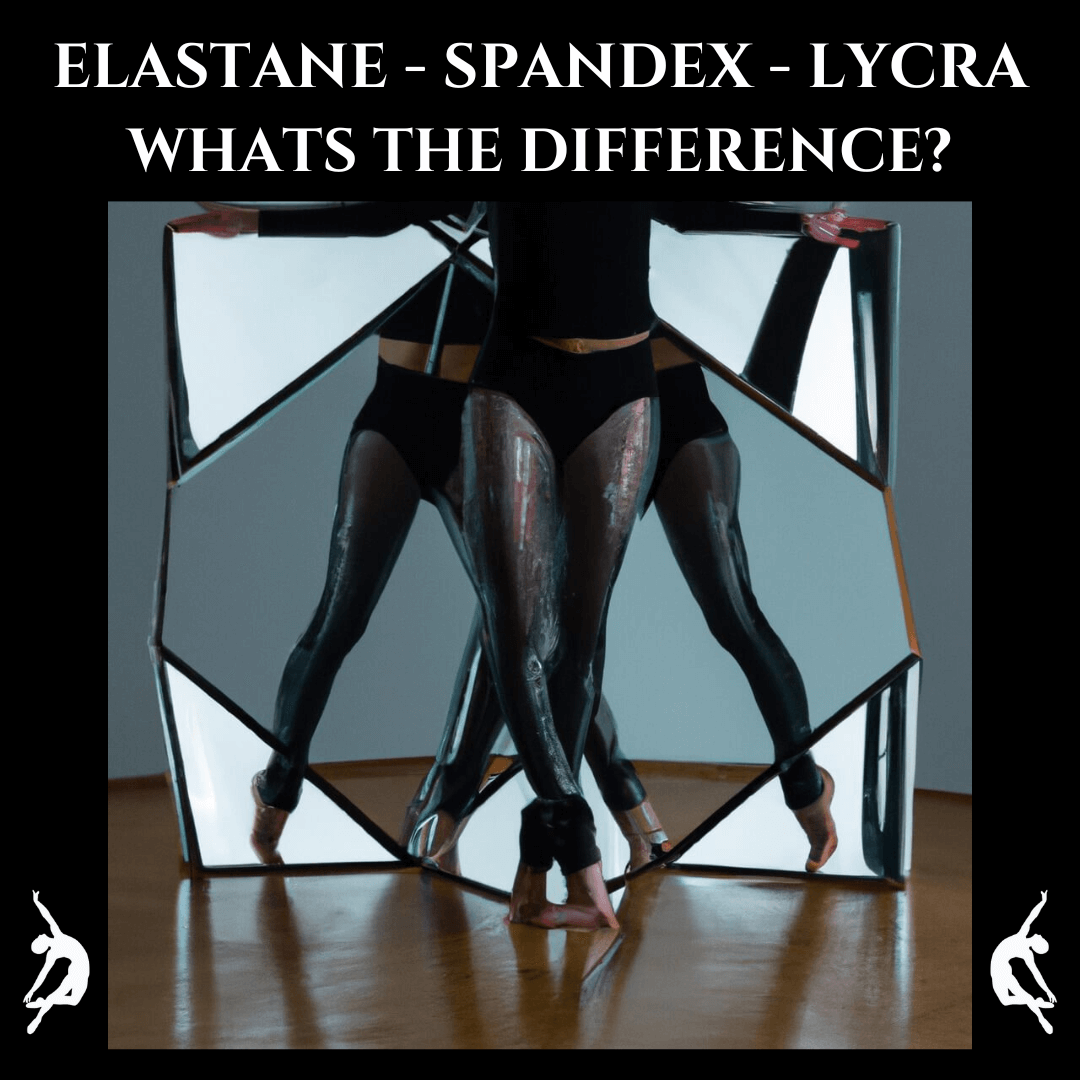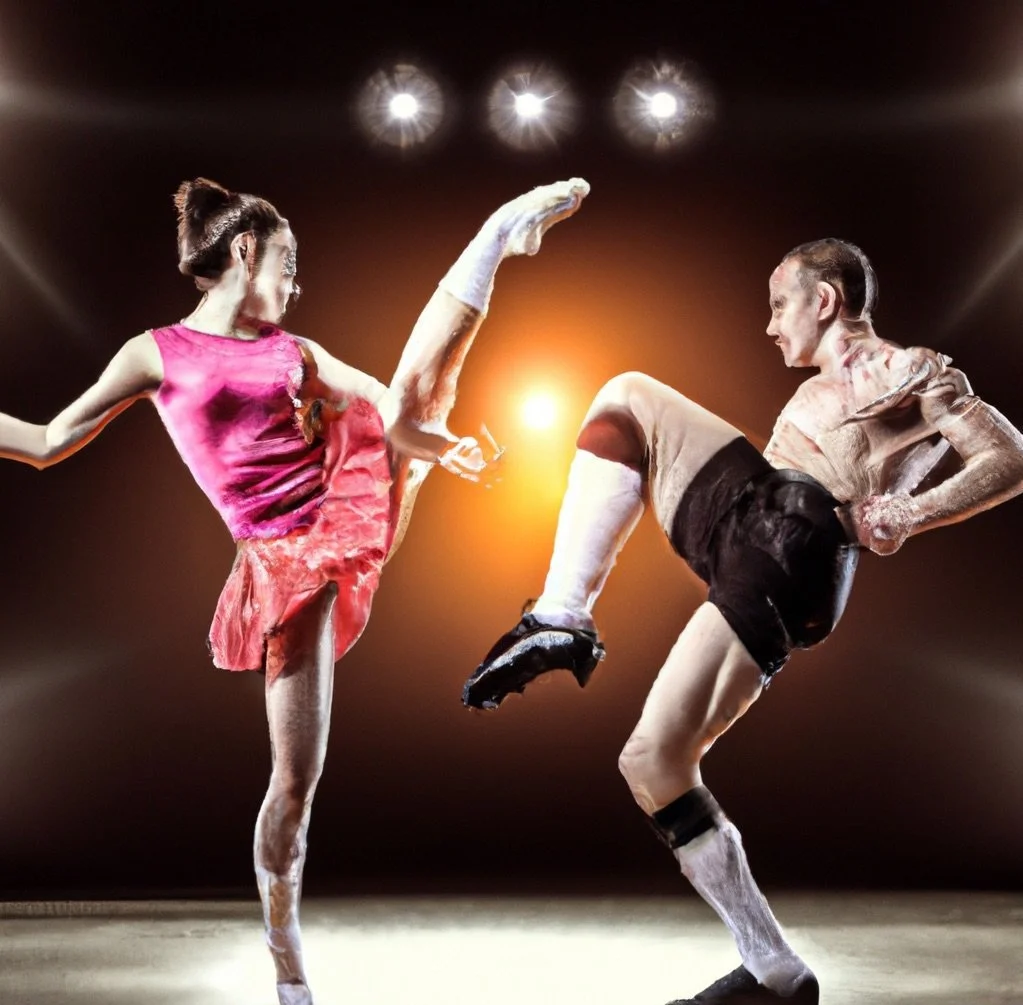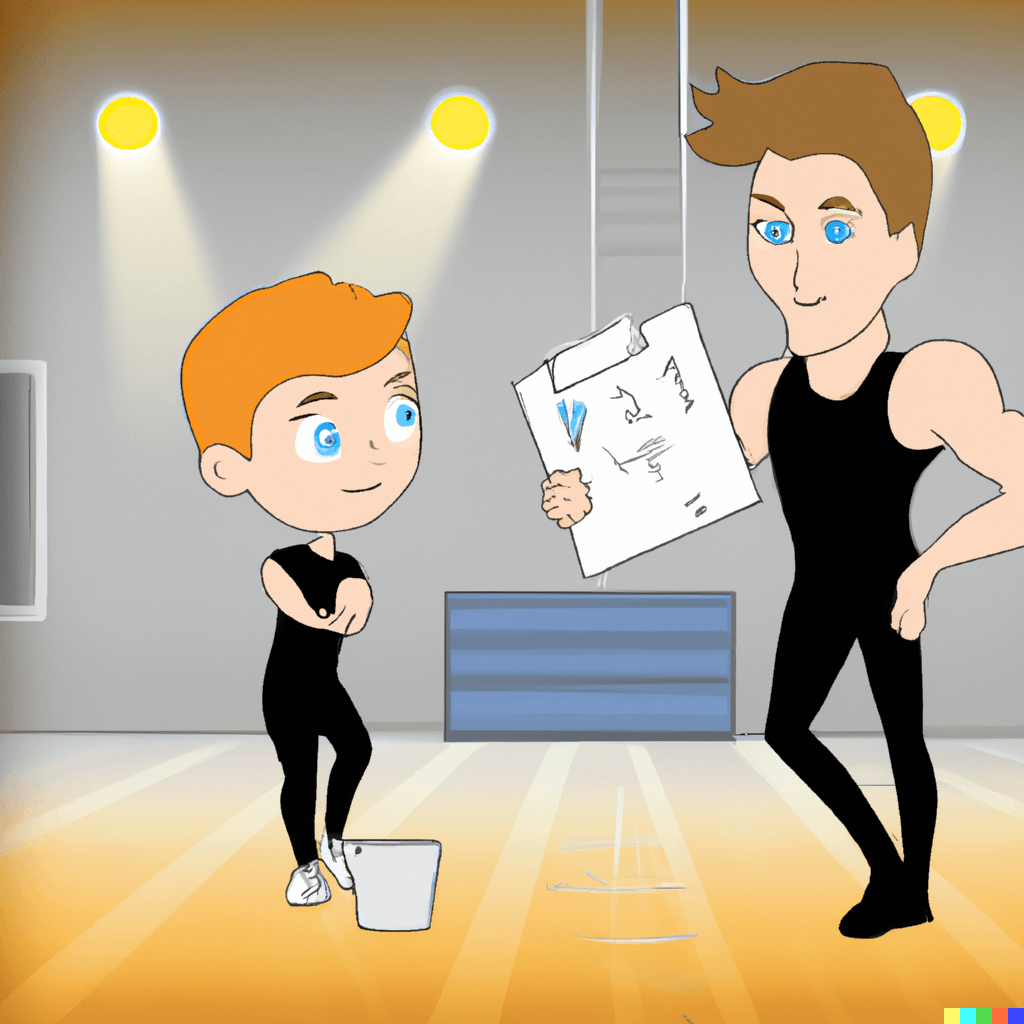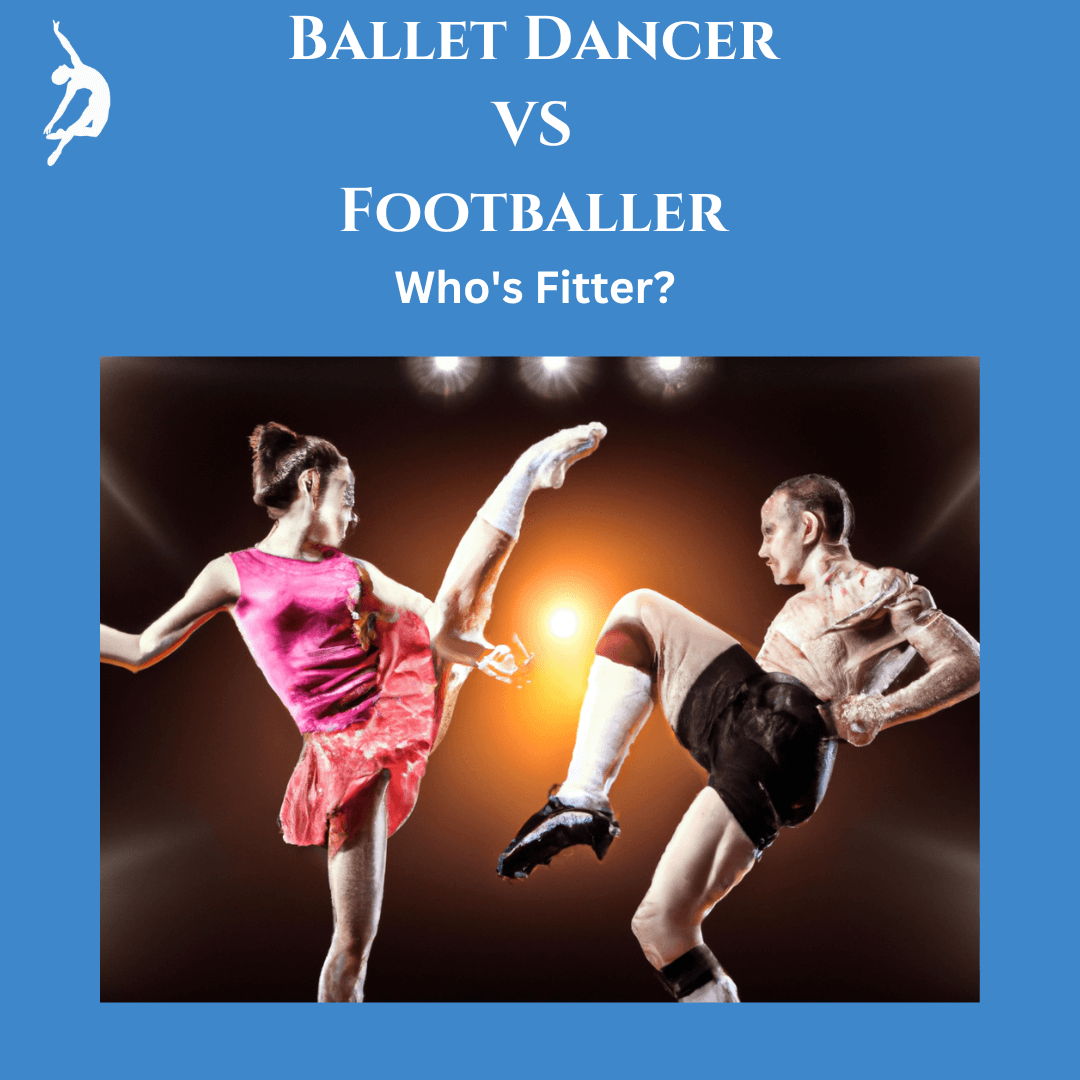Elastane - Spandex - LYCRA® What’s the difference?
Elastane - Spandex - Lycra - What are the differences? & Why do dancers wear Elastane? 5 good reasons explained - your dancewear fabric questions answered!
What are the differences between Elastane, Spandex and Lyrca?
Elastane & Spandex
Elastane and Spandex are interchangeable words meaning the same thing. Around the world this fabric is known as Elastane, but in the USA it’s known as Spandex.
What is Lycra ?
LYCRA® is a ‘trademarked’ brand name of synthetic elastane fibre.
Other well known brand names who have managed to get their brand known as the product itself include:
Speedo (Swimwear)
Kleenex (Tissues)
Band aid (Adhesive Bandage)
Panadol (Paracetamol)
Roller Blades (Inline skates)
The list goes on and on…
Items made of Elastane (such as adult ballet leotards) can be machine washed (cold or warm water) in a garment bag and dried at low temperatures, although, we suggest hand washing and drying your Aplomb Dancewear in the shade for an extended life. Leaving dancewear in the sun and the heat starts to turn Elastane yellow.
Elastane fibres are frequently covered with other fibres such as polyester, as is Aplomb Dancewear.
Using cotton mixed with Elastane creates a heavier fabric that holds on to moisture and odour, and takes much longer to dry which is why we chose our main dancewear fabric with a make-up of 20% Elastane, 80% Polyester. Polyester has become one of the most effective fabrics for quick drying making it perfect for high intensity activities like dance.
At Aplomb we use a higher percentage of Elastane than other dancewear companies, which gives our dancewear its soft and silky feel.
Fabric composition
“In textiles the synthetic fibre known as Elastane is composed of at least 85 percent polyurethane by weight. Such fibres are generally used for their highly elastic properties. Trademarked fibres in this group are Lycra, Numa, Spandelle, and Vyrene. Such fibres have, for many textile purposes, mostly replaced natural and synthetic rubber fibres”. (Source: Britannica.com)
Why do dancers wear Elastane? 5 good reasons explained!
1. Flexibility and Range of Motion:
Elastane, spandex and Lycra fabric provide excellent stretch, allowing dancers to move freely and perform complex movements without feeling restricted. For example, full body garments like male unitards require a stretchable fabric to allow for a full range of movement, and Elastane is perfect at achieving this. It enables flexibility, crucial for executing various dance moves.
2. Comfort and Fit:
Elastane fabric moulds to the body like a ‘second skin’, offering a snug and comfortable fit. This ensures that the dancer's attire stays in place during vigorous movements, preventing wardrobe malfunctions and allowing them to focus on their performance.
3. Breathability and Moisture Control:
Many elastane-blend fabrics are designed to wick away moisture and promote breathability, keeping dancers cool and dry during intense routines. This feature is particularly essential in physically demanding dance styles.
4. Durability and Resilience:
Allowing dancewear garments to maintain their shape and elasticity even after repeated wear and washing, Elastane adds durability and resilience. This is crucial for dance outfits which undergo frequent stretching and intense movement.
5. Aesthetic Appeal:
Elastane blends contribute to the sleek and stylish appearance of dance attire. The fabric's ability to conform to the body's contours enhances the visual aesthetics of dancewear, emphasising lines and movements for a polished look.
“Although somewhat weak in the relaxed state, Elastane fibres can be stretched about 500–610 percent beyond their original length without breaking and quickly return to their original length and shape. Elastane is lightweight and cool; it’s also resistant to deterioration from body acids; and it is easily cleaned and quick-drying”. (Source: Britannica.com)
In Summary
Elastane, Spandex, and Lycra are essentially the same thing. The terms Elastane and Spandex are interchangeable worldwide; the only difference lies in their regional naming conventions. Lycra, on the other hand, is a brand name for a specific type of synthetic elastane fibre.
Various well-known brands have achieved such recognition that their brand name is now synonymous with the product itself, like Kleenex for tissues or Band-Aid for adhesive bandages.
Elastane is prized for its elasticity, allowing for exceptional stretch without losing shape. It's often combined with other materials like polyester, which enhances durability and quick drying, making it ideal for high-intensity activities like dance. Aplomb Dancewear uses a higher Elastane percentage, providing a soft, silky texture.
Dancers opt for Elastane-based fabrics for reasons like flexibility, comfort, moisture control, durability, and the fabric's aesthetic appeal, as it molds well to the body and accentuates movements, crucial in dance performances.
Recommended posts
New Zealand School of Dance and their generosity
The images from the shoot are a celebration of movement, athleticism, and the beauty of the human form. They capture the grace and power of the dancers, as well as the quality and style of Aplomb Dancewear’s garments.
Wellington, NZ - Aplomb Dancewear and the New Zealand School of Dance joined forces for a stunning collaborative photoshoot in the heart of Wellington. Kyle, who graduated from the New Zealand School of Dance in 2003, founded Aplomb Dancewear with the goal of providing dancers with high-quality, functional, and stylish dancewear. He reached out to New Zealand School of Dance who championed the concept and the result was nothing short of spectacular.
The photoshoot, captured by dance photographer Stephen A’Court, took place at ‘Flashdog Studios’, during which time the dancers from the New Zealand School of Dance showcased their incredible talent while modelling the latest collection of men’s dancewear and women’s dancewear from Aplomb’s release into the dance world.
The images from the shoot are a celebration of movement, athleticism, and the beauty of the human form. They capture the grace and power of the dancers, as well as the quality and style of Aplomb Dancewear’s garments.
"We are thrilled to have had the opportunity to collaborate with the New Zealand School of Dance on this project," said Kyle, the founder of Aplomb Dancewear. "The School and NZSD Director Garry Trinder have a reputation for excellence, and dancers produced at the school are some of the most talented in the world. We are proud to have our ballet clothing and dancewear showcased alongside such incredible artistry." The photoshoot has also begun a strong relationship between APLOMB Dancewear and the New Zealand School of Dance, highlighting the generosity of New Zealand School of Dance in supporting the project.
The collaboration between Aplomb Dancewear and the New Zealand School of Dance is a testament to the thriving dance communities in New Zealand and Australia, and to the commitment of both organisations to support and elevate the art of dance. The photos have been used in a variety of ways, including on the Aplomb Dancewear website, in advertising materials, and in various publications and social media channels.
For more information about the New Zealand School of Dance, please visit their website at www.nzschoolofdance.ac.nz
New Zealand School of Dance
Natasha
Marketing & Relationships
PO Box 7146
Wellington 6242, New Zealand
+64 4 381 9228
Recommended posts
Why all Boys (and Men) should take dance classes!
Why all Boys (and Men) should take dance classes! - 7 compelling reasons
Why all Boys (and MEN) should take dance classes!
7 compelling reasons
1.Discipline & Concentration
Boys (and men) will find an inclusive and diverse world in dance that offers something for everyone. It's not just a hobby; it's a valuable skill that can enrich anyone’s life physically, mentally, and socially. Through the discipline and concentration that’s demanded in dance & ballet, boys (and men) will learn to be patient and persevere through challenges, developing resilience and strong work ethics.
2. Social Skills, Creating Respect & Dependability:
Dancing often involves working in a group or with a partner, fostering teamwork and social skills. It's a great way to meet new people and make friends.
Dance creates dependability in boys (and men). Engaging in dance partnering work (pas de deux) cultivates the understanding and awareness required to effectively support your partner.
Partnering work is the stage where boys begin to excel & thrive, recognising their crucial role as the support person (the frame) for the ballerina, ensuring her stability to craft art (the picture). Developing the knowledge and understanding of being a proficient dance partner fosters respect for girls and women while reinforcing the importance of their presence.
3. Physical Fitness:
Ballet and dance have a wide range of movements that engage and strengthen various muscle groups, particularly in the legs, core, and upper body. The extensive stretching and range of motion exercises within ballet and dance are an excellent way to stay in shape, improve flexibility, posture, muscle strength and cardiovascular health, which reduces the risk of injury.
4. Confidence:
The sense of accomplishment from learning to master your body and the way it moves is empowering. Dancing promotes self-confidence and self-esteem by improving body awareness and encouraging self-expression. The form-fitting nature of dance attire ( Eg: a mens unitard or ballet tights for men) emphasises the dancer's physique, helping them feel more connected to their body and its capabilities. As dancers become more attuned to their physicality, their self-esteem naturally grows.
5. Stress Relief:
Dancing is an effective stress reliever. Dancing allows you to escape from the demands of daily life, express emotions, and unwind in a fun and creative way. Dance also demands the use of correct breathing techniques. Breath is closely connected to movement in dance which improves stamina and endurance. Deep and controlled breathing helps to ease stress.
6. Attention to Detail:
Dance and ballet focuses on the smallest of details, from the positioning of fingers to the angle of the head. Dance students learn to pay close attention to these details, which enhances their concentration and attention to subtleties. This carries over to any other sport that you engage in.
7.Cultural Appreciation:
Many dance styles have cultural roots and traditions. Learning various dance forms can help individuals gain a deeper appreciation for different cultures and their history. Cultural dance is a unique form of dance that is collectively cherished within a community. It often serves specific purposes and carries rich meanings, encompassing rituals, ceremonial events such as weddings and births, expressions of reverence for ancestors, or simply for the joy of dancing!
Types of cultural dance include:
India: Classical & Bollywood
Spain: Flamenco
Brazil: Samba
China: Dragon Dance
Cuba: Salsa
Russia: Cossack
Switzerland: Traditional Folk Dance
Argentina: Tango
Japanese: Kabuki
In summary, dance promotes discipline and concentration by demanding precision, regular practice, attention to detail, mental focus, respect for self and others, and a commitment to self-improvement. These qualities are not only essential for success in dance and ballet but will also benefit individuals in many aspects of their lives.
Contact a dance studio in your city and ask for a breakdown of classes they have to offer!
Recommended posts
How Do I Get My Boys Interested in Dance?
How Do I Get My Boys Interested in Dance? 7 Great Conversation starters for parents. These ‘conversation starters’ aim to address potential concerns or stereotypes while highlighting the numerous benefits dance can offer to young boys.
7 Great Conversation Starters for Parents
These ‘conversation starters’ aim to address potential concerns or stereotypes while highlighting the numerous benefits dance can offer to young boys.
1. Athletic performance improvement:
“Ballet enhances athleticism by fostering balance, agility, strength, and flexibility. Its precise movements improve body control, coordination, and muscle endurance. Dance helps to develop core strength, refine posture, and heighten spatial awareness, benefiting athletes with improved performance, injury prevention, and overall grace in their respective sports”.
2. Related Personal Experiences:
"I've heard from other parents that their kids have gained so much confidence and self-esteem from being in dance classes. It's not just about the movements but also about learning to express oneself and feel comfortable in their own skin."
3. Address Misconceptions:
"Sometimes there are misconceptions about dance being just for girls, but that has rapidly changed! Many renowned male athletes and performers incorporate dance into their training. It's a fantastic way for our sons to develop athleticism, agility, respect and grace”.
4. Highlight the Benefits:
"Did you know that dance helps improve strength, flexibility, and coordination? It's a great way for kids to stay active while expressing themselves creatively."
5. Share Relatable Stories:
"I was reading about [name the football team of your choosing and talk about how that team incorporates ballet training] - Isn’t that incredible how AFL (Australian Football League) players are using ballet to shape their discipline, confidence, and their strength for their football career. It could be a fantastic opportunity for our son too!"
(on a personal note - when I was dancing with WA Ballet, AFL team ‘West Coast Eagles’ would come in as a team and do ballet training with the ballet company members - the football players were always amazed at how we could easily jump, turn and lift our dance partners with such ease and control).
6. Emphasise Variety:
"There are so many different styles of dance, from hip-hop to ballet to contemporary. It could be a fun way for our sons to explore and find something they're passionate about."
7. Discuss Social Aspects:
"Dance classes can also be a great way for our sons to make new friends and build a supportive community. It's not just about the steps but also about teamwork and camaraderie."
Regardless of the sport, there are benefits to be reaped! Take, for instance, tennis, football, rugby, baseball, sprinting, soccer, hockey, squash, karate, or MMA.
Within a few weeks, with ballet and dance you can hone movements and witness immediate enhancements in your chosen sport!
Ballet has long been revered as a traditional method for athletes seeking performance improvement. Renowned for bolstering flexibility, strength, power, stability, balance, and more. Yet, in contemporary times, there's also Irish dance—a rapid, explosive dance form. Additionally, tap and jazz dance excel in cultivating swift footwork and agility.
Your sport mirrors a choreographed dance!
Looking at NRL (rugby) as an example - In Rugby the team ‘makes a play’, this ‘play’ is a pre thought out set of movements (choreography). https://en.wikipedia.org/wiki/Playmaker
Embracing dance training enriches mental focus, concentration, and prowess. Thus, integrating it into your training regimen amplifies the execution of sport-specific manoeuvres.
Sports people who do or did ballet during their careers
Harry Garside - Boxer - Australian Gold and Bronze medals at the Commonwealth and Tokyo Olympic games respectively
Harry said - “I started ballet in 2019. I had always wanted to try ballet but was a little scared to let my community know that I was interested in dance. I feared being judged and becoming an outcast. I finally built up the courage in 2019 to start, and I am so grateful I did. I always walk out feeling a little taller now, and a little more confident with each step. The best part is that [ballet] has helped my boxing massively, too”.
Lynn Swan- NFL - USA - Ballet
Lynn said - “People don’t understand dance. It’s all about rhythm, timing, body control, and coordination; everything you need on the football field. The finishing of one move is the preparation and continuation of the next. I started developing an ability to feel very comfortable in the air, especially when running a route to jump up and catch the ball. To do that, you need body control developed by danceability”.
Kobe Bryant- Basketball Player- Tap Dance
Koby Bryan did tap dance classes to strengthen his ankles. He noticed quicker feet on the court.
Steve McClendon- NFL - USA - Ballet
Steve said - “In comparison to football, Ballet is harder than anything else I do.”
John A. Bergfeld - USA - Cleveland Browns Medical Adviser
John said - “Ballet is excellent at preventing injuries. I see fewer injuries occur once players started doing ballet”.
Herschel Walker - Football legend and Mixed Martial Arts (MMA) fighter.
Herschel said - “ Ballet is probably one of the hardest things I have done, almost like MMA. People don’t give it a lot of credit and think it is easy, but it is very difficult. For athletes, you use muscles you really don’t use and, ballet is something I really respect”.
Rio Ferdinand - English - Former Football (Soccer) player - Ballet
Rio was not only trained in ballet , he received a scholarship to join the Central School of Ballet, London. Ferdinand says ballet helped him develop as a footballer as he had to improve his balance and timing.
Evander Holyfield - Four time heavyweight boxing world champion
This athlete followed a merticulous training routine to master boxing techniques. He employed a ballet instructor as part of his training routine and saw his performance improve. About his classes with ballet trainer Marya Kenneth, he said
Evander said - “I’m a lot more flexible since I’ve been working with her. I don’t get hit with the shots I used to get hit with. It’s not that I didn’t used to see the punches coming; I was just too stiff to get away from them sometimes”.
Lots of people say ballet is ‘not manly enough’
Arnold Schwarzenegger - Professional body builder, Actor, Business man, Film maker
Arnold is the epitome of ‘the manly dude’. He took ballet classes in the early 70s. Dancer Marianne Claire taught him. Ballet training helped him perfect his bodybuilding poses during his career.
Jean-Claude Van Damme- Martial artist, Actor, and Conservationist
Jean Claude said - “Ballet is an art but it is also one of the most difficult sports. If you can survive a ballet workout, you can survive a workout in any other sport”.
More and more athletes turn to ballet each year.
Will your son use ballet to better himself for a career in the sporting arena?
Recommended posts
A Dazzling Collaboration
Powder Dance Photoshoot - A Dazzling Collaboration. Aplomb Dancewear & Photographer Kerry Herschell
Aplomb Dancewear & Photographer Kerry Herschell
In the world of art and creativity, collaboration often leads to astonishing outcomes. This was perfectly exemplified on a recent sun-kissed afternoon in September 2023 when Aplomb Dancewear teamed up with the talented photographer Kerry Herschell for the first time. The setting for this momentous collaboration was none other than the Photography Studies College in South Melbourne, where dreams and creativity converged.
Three extraordinary dancers, Brett Beckhurst, Britney Unmack, and Chloe Sismanis, discovered online, convened for the mesmerising project, each bringing their distinct style and expertise to the table.
The heart of this remarkable photoshoot was a playful, imaginative concept: a powder photoshoot. Aplomb Dancewear played a pivotal role, infusing vivid colours and fun into the shoot. Our dancewear designs beautifully complemented the dancers' movements, adding a layer of visual delight.
The result of this collaboration was nothing short of spectacular. Kerry Herschell's masterful photography skills captured moments of sheer beauty and grace as the dancers moved through clouds of vibrant powder. The contrasting colours and textures, against the dancers' poised figures, painted a mesmerising picture of elegance, strength, and vivacity.
This inaugural collaboration heralded an artistic synergy that surpassed all expectations. Aplomb Dancewear's commitment to quality, innovation, and creativity aligned seamlessly with Herschell's artistic vision.
The images exemplify the magic that occurs when artistic talents unite. Aplomb Dancewear and Kerry Herschell have set a new standard for creative synergy, setting the stage for exciting future projects.
Dancers Wear:
Brett Beckhurt wears Aplomb’s Precision blue ballet tights for men, with the matching blue mens Charm dance top.
Britney Unmack wears Aplomb Dancewear’s Accomplished blue and pink women’s leggings, with the matching blue and pink Poise women’s crop top.
Chloe Sissmanis wears Aplomb Dancewear’s Accomplished women’s leggings in blue and orange with the matching blue and orange Poise women’s crop top.
Recommended posts
Who’s Fitter?
Who is fitter? A ballet dancer or a footballer?
Who’s Fitter? Ballet Dancers VS Footballers
Ballet dancers are considered to be some of the fittest athletes in the world due to the demanding physical requirements of their craft. While many people associate footballers with peak physical fitness, ballet dancers are actually more finely tuned and well-rounded athletes.
One reason for this is the sheer endurance required for a typical ballet performance. A ballet dancer must be able to perform for hours on end, executing complex and physically demanding movements with grace and control. This requires a high level of cardiovascular fitness, as well as exceptional muscular endurance. Ballet dancers must be able to maintain their strength and control throughout a performance, which is why they are known for having incredibly toned and defined muscles.
Another factor that sets ballet dancers apart from other athletes is the level of control and precision required for their movements. Ballet dancers must be able to execute movements with grace and fluidity, and they must also have a high degree of balance and coordination. This level of control and precision requires a great deal of strength and flexibility, which is why ballet dancers are often seen as the epitome of physical grace and beauty.
Ballet dancers also have a unique set of physical demands that sets them apart from other athletes. For example, they must be able to execute jumps, leaps, and lifts with incredible height and power, while still maintaining their control and grace. This requires a great deal of strength and explosive power, which is why ballet dancers are often seen as having incredibly strong legs and core muscles.
In addition to these physical demands, ballet dancers must also have a high level of mental focus and discipline. Ballet is a demanding and physically challenging sport, and dancers must be able to concentrate and perform even when they are tired or under pressure. This level of mental toughness is something that is not commonly seen in other athletes, and it is one of the reasons why ballet dancers are often seen as some of the most mentally and physically fit athletes in the world.
In conclusion, while footballers are certainly in excellent physical condition, they are not as well-rounded or as physically demanding as ballet dancers. Ballet dancers require a unique combination of strength, endurance, control, precision, and mental focus that sets them apart from other athletes. They are true physical marvels, and their abilities are a testament to the incredible dedication and discipline that is required to become a successful ballet dancer.











































Why all Boys (and Men) should take dance classes! - 7 compelling reasons